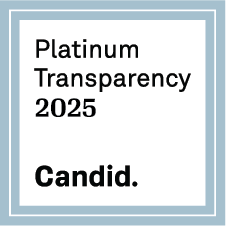Understanding Risk Forum, Mapping Global Risk, July 2-6 2012
Posted by Pierre Béland • July 20, 2012
The World Bank’s Global Facility for Disaster Risk and Recovery (GFDRR) organizes the Understanding Risk (UR) Forum every two years. The theme of this second UR forum in Cape Town, South Africa, was “Mapping our Global Risk”. A spatial understanding of vulnerability is central to understanding risk and making informed decisions to reduce that risk. About 400 persons attended that forum. I participated with Kate Chapman and we met very dynamic communities collaborating to this area of studies.
The Forum illustrated the important role of Open Data and Open Source communities linked to the World Bank's Open Data for Resilience Initiative (OpenDRI) in these projects. Many innovations were presented. Central America, Haiti and Indonesia Risk Assessment Projects were major initiatives were Open Community contributed in the development of tools presented to this conference (ie. CAPRA, Geonode, InaSAFE, HOT Task Manager).
During the first three days, 14 panel sessions discussed about various aspects of drought, flood and earthquake response. Innovative projects and tools were presented. A large part of the discussions and training sessions were focused on earth observation imagery, mapping and GIS tools. For these three days, the ground floor of the conference was for Ignite sessions, discussions and lunchs. The participants could visit us at various booths. Practionners who had to establish risk assessment projects were very interested about OSM and HOT initiatives. Sessions Presentations can be accessed online.
[inline:IMG_7247.JPG=HOT booth] Emmanuel Kala (Ushahidi) and Kate Chapman at HOT booth
Kate Chapman lead the session on Crowdsourcing. Robert Munro, a linguist, presented Haiti Mission 4636 in Jan. 2010 and Crowdsourced processing of information in Haitian Kreyol. Emmanuel Kala, developper at Ushahidi, discussed about the Verification process in context of crisis mapping : Methodology vs Technology. Helena Puig Larrauri, co-founder of Stanby Task Force, discussed about crowdsourcing in conflict settings. Ethic and vulnerability of local responders thematics were presented. Shannon Dosemagen, co-founder of PublicLab, discussed about Engaging Communities in Grassroots Monitoring of Environments in Crisis. Her group is experimenting balloon and kite mapping in various situations. Kate Chapman, Executive director of HOT, presented the HOT micro task approach. And finally, Abigail Baca of World Bank / GFDRR presentation was about Leveraging Crowdsource mapping : Approaches for Disaster Risk Reduction. She underlined the strong NGO support and the importance to work directly with communities, creating multi-purpose maps. She illustrated the involvement of OSM in the Indonesian project (Open source tools for online mapping, active global community of users, customized resources). She also highlighted the fact that OpenDRI encourages and facilitates the sharing of climate and disaster data.
[inline:ur06_IMG_7420-Crowdsourcing.JPG=Crowsourcing] Kate Chapman, Emmanuel Kala, Robert Munro, Shannon Dosemagen, Helena Puig Larrauri and Abigail Baca Applications of Crowsourcing for Development and Disaster Response
The last two days, workshop sessions gave the possibility to work with the various tools presented during the conference (ie. Capra, Geonode, OSM, QGIS, InaSAFE, etc.) There were about 50 participants to each workshop, including the OSM workshop.
[inline:IMG_7648.JPG=OSM workshop] OSM Workshop : Walking papers and GPS Devices
Other then OpenData, we need ways to share this information. The Carribean Geonode platform was developped to support Climate and Risk Management. This platform is already used in various countries to share data. See for example, Haitidata.org.
The Inasafe add-on to QGIS is used for risk analysis and modeling. This was develelopped in the context of the Indonesian-Australia project were HOT collaborated.
[inline:ur13_IMG_7655-Tim-SuttonOSM-QGIS.JPG=Inasafe] Tim Sutton, QGIS Developper and OSM contributor maintains the Inasafe Plugin
Participants expressed a great interest for OSM community and HOT activities in the context were Community mapping is often favored to let communities participate and be more resilient. OSM community and HOT have solutions to offer for data input. Also, OSM Open Data is imported simply in GIS. It is well integrated with QGIS and Risk analysis add-on such as InaSAFE.
Pierre Béland
MORE INFORMATION
- Access 2012 Understanding Risk Forum Presentations online
- Global Facility for Disaser Reduction and Recovery (GFDRR)
- The GFDRR Innovation Series Launch – New Tools in Mapping for Disasters and Development
- Open Data for Resilience Initiative (OpenDRI) GFDRR
- Geonode
- Haiti Data (Geonode)
- Open Data for the Horn (Geonode)
- Capra platform
- InaSAFE Documentation
- Contribution of Satellite Earth Observation Technology to Disaster Risk Management by Philippe Bally, ESA
- ESA Observing the Earth - Understanding risk with Earth observation
- Global Earthquake Model (GEM)
[inline:ur14_IMG_7685-Kate-Chapman-Robert-Soden-Trevor-Dhu-Abigail-Baca.JPG=QGIS workshop : Kate Chapman of HOT, Robert Soden of OpenDRI, Trevor Dhu of AusAID and Abigail Bacca of GFDRR] QGIS workshop : Kate Chapman of HOT, Robert Soden of OpenDRI, Trevor Dhu of AusAID and Abigail Bacca of GFDRR







